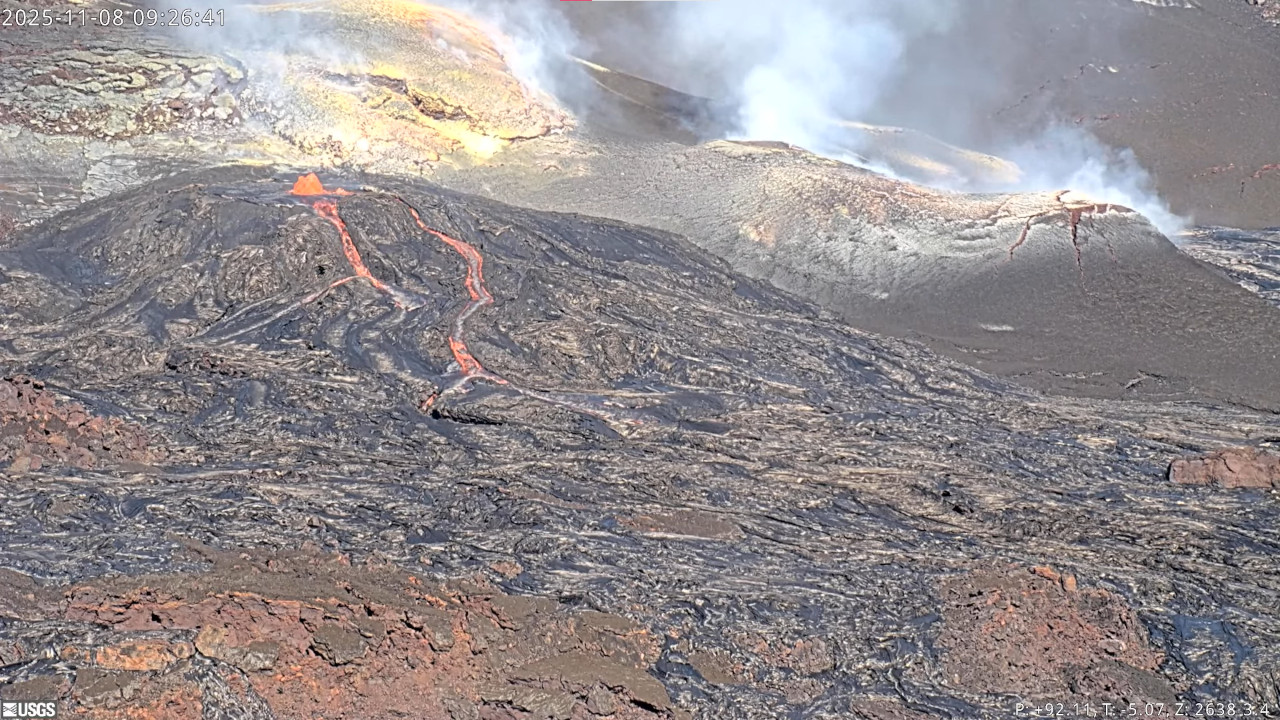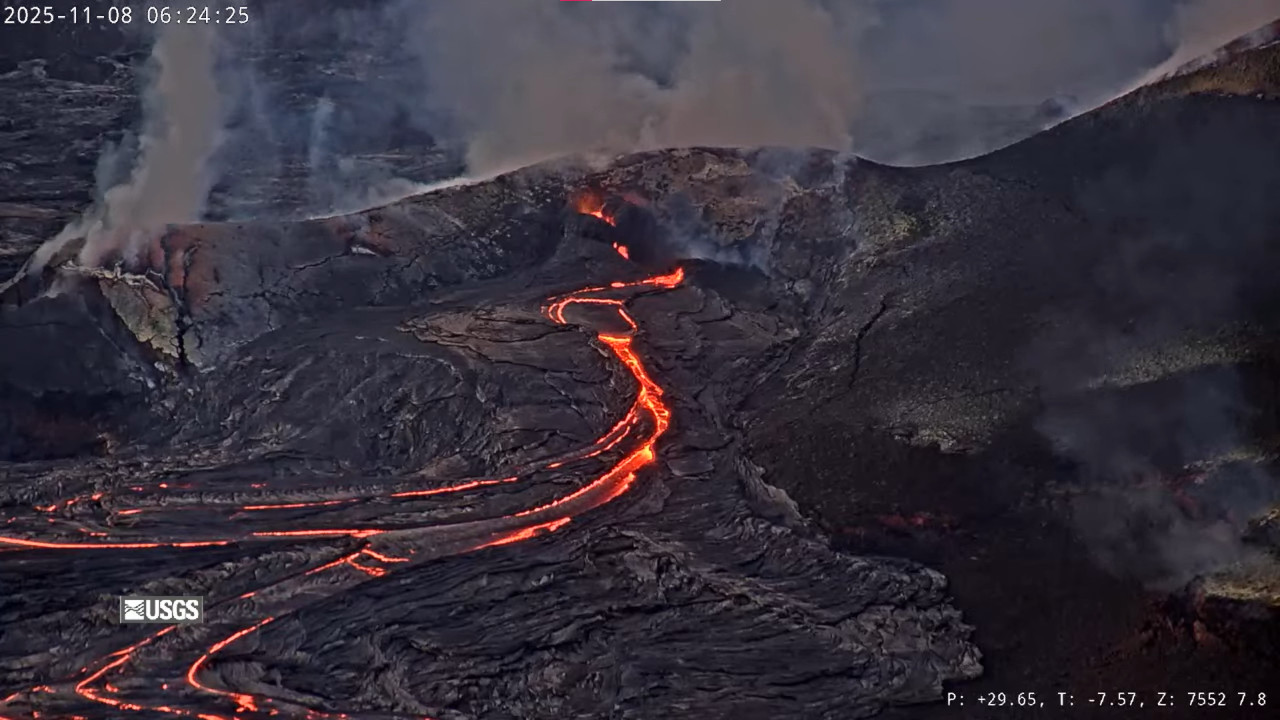(BIVN) – Lava continues to intermittently overflow from the vents within Kilauea volcano’s summit caldera, with more vigorous eruptive activity expected soon.
“Inflation of Kīlauea’s summit continued at a slow rate yesterday,” reported the USGS Hawaiian Volcano Observatory in a Saturday morning update. “However, periods of strong glow overnight from the north and south vents and the occurrence of overflows from the north vent indicate the start of episode 36 may be close.”
Observatory scientists say inflation-based models suggest the high lava fountains could begin between now and November 11th.
The USGS Volcano Alert Level remains at WATCH.

USGS webcam captures lava activity at the south vent within the Kīlauea summit caldera on Saturday morning.
From the USGS HVO update issued on Saturday morning:
Summit Observations:
Intermittent overflows, lasting from a few minutes to 2 hours, from the north vent continued throughout yesterday and this morning. These overflows display limited spattering until drainback, indicating that mostly degassed magma is being erupted at this time. A cone has built around the vent on the back wall of the north vent, which at times erupts vigorously and main remain pouring lava back into the main vent during drainback events. A total of 135 precursory overflow events have occurred since early morning on November 3.
Summit inflation continued yesterday, but the rate has since reduced overnight. Overall, the Uēkahuna tiltmeter (UWD) has recorded approximately 0.6 microradian of inflationary tilt over the past 24 hours yielding 26.7 microradians of inflationary tilt since the end of episode 35. After overflow activity resumed at the north vent on November 6, periods of low tremor correlating with pond filling and/or overflows is followed by 1-2 minute long tremor spikes related to drainback.
Plumes of gas continue from both vents this morning and sulfur dioxide (SO2) gas emissions remain at background levels, typically between 1,200 and 1,500 tonnes per day. Current wind conditions at the summit are light and variable and could pose a problem for communities adjacent to Hawai’i Volcanoes National Park if high fountains began under these conditions.
Episode 35 lava fountains began at approximately 8:05 p.m. HST on October 17 and ended at 3:32 a.m. HST on October 18. South vent fountains reached heights of nearly 1,500 feet (460 meters) and north vent fountains reached heights of about 1,100 feet (330 meters). These were the highest single fountain and highest pair of fountains seen during this eruption so far. Episode 35 fountains produced an estimated 13 million cubic yards (10 million cubic meters) of lava. The combined average eruption rate was over 500 cubic yards per second (400 cubic meters per second) from the dual fountains. Lava flows from the fountains covered about two thirds of the floor of Halemaʻumaʻu crater.


by Big Island Video News9:54 am
on at
STORY SUMMARY
HAWAIʻI VOLCANOES NATIONAL PARK - Scientists say a total of 135 precursory lava overflow events have occurred since early morning on November 3.